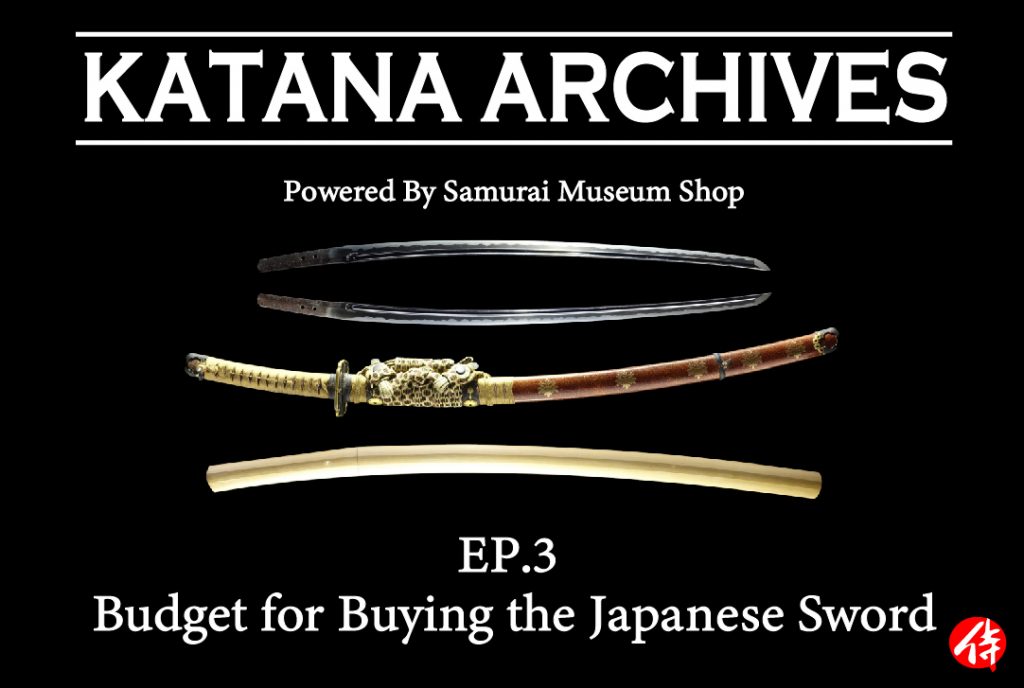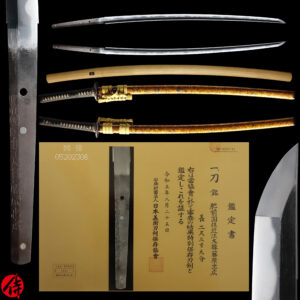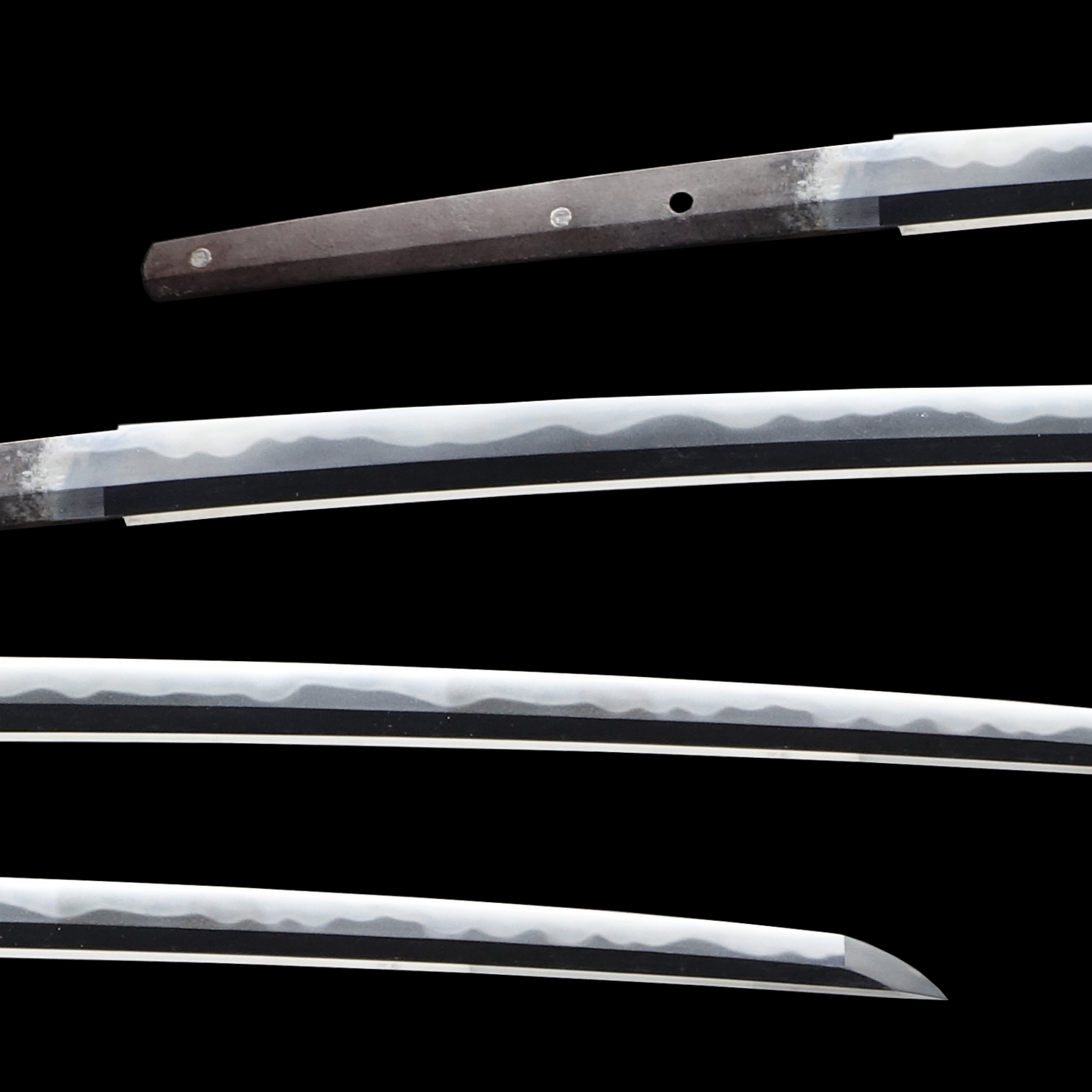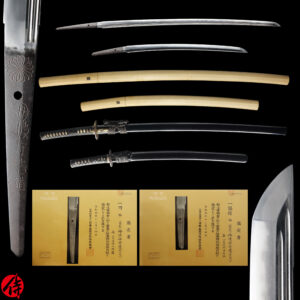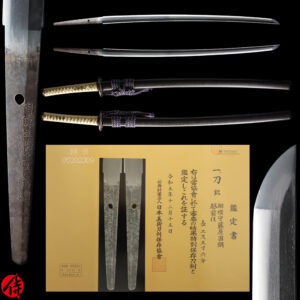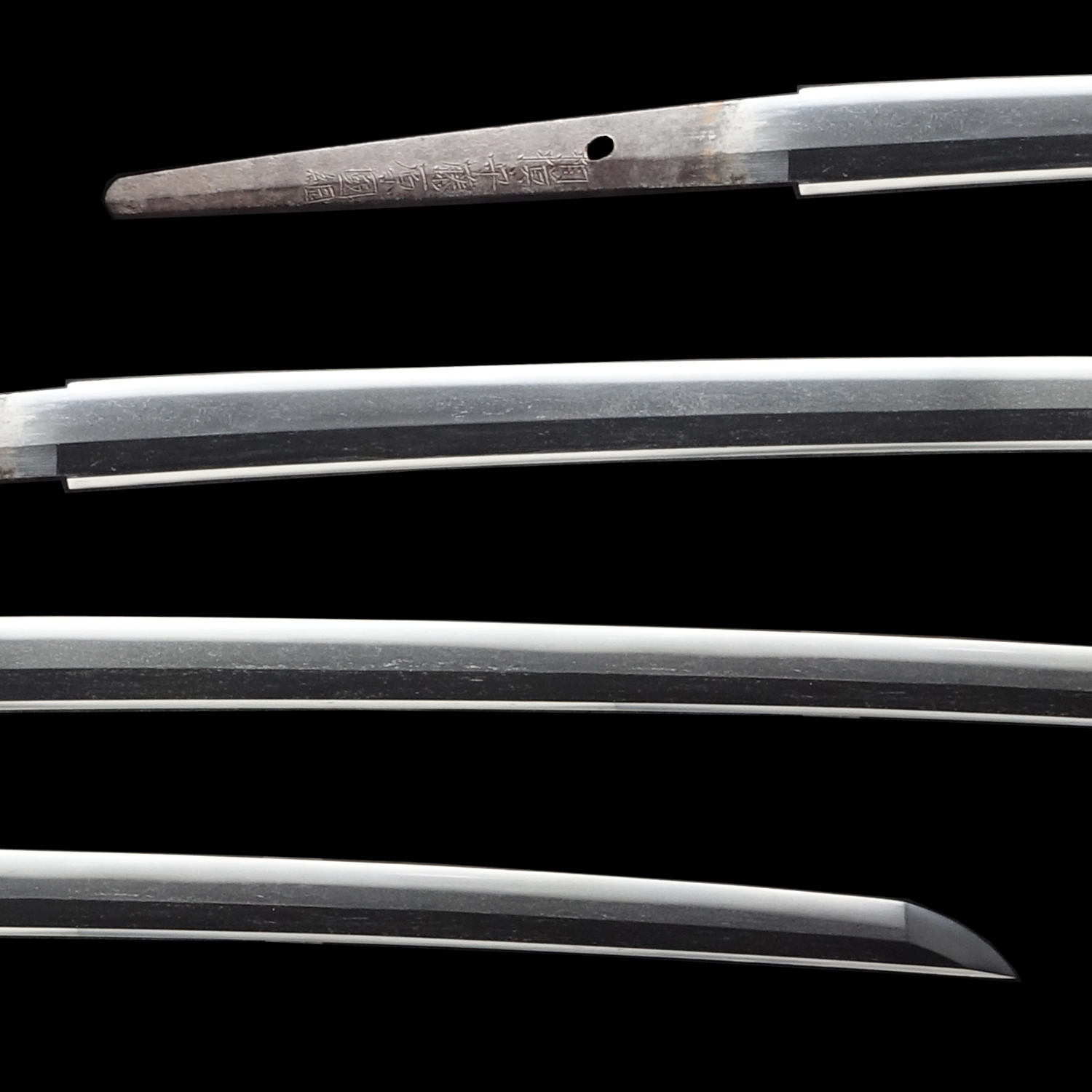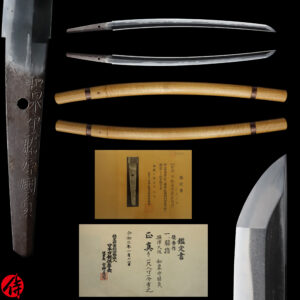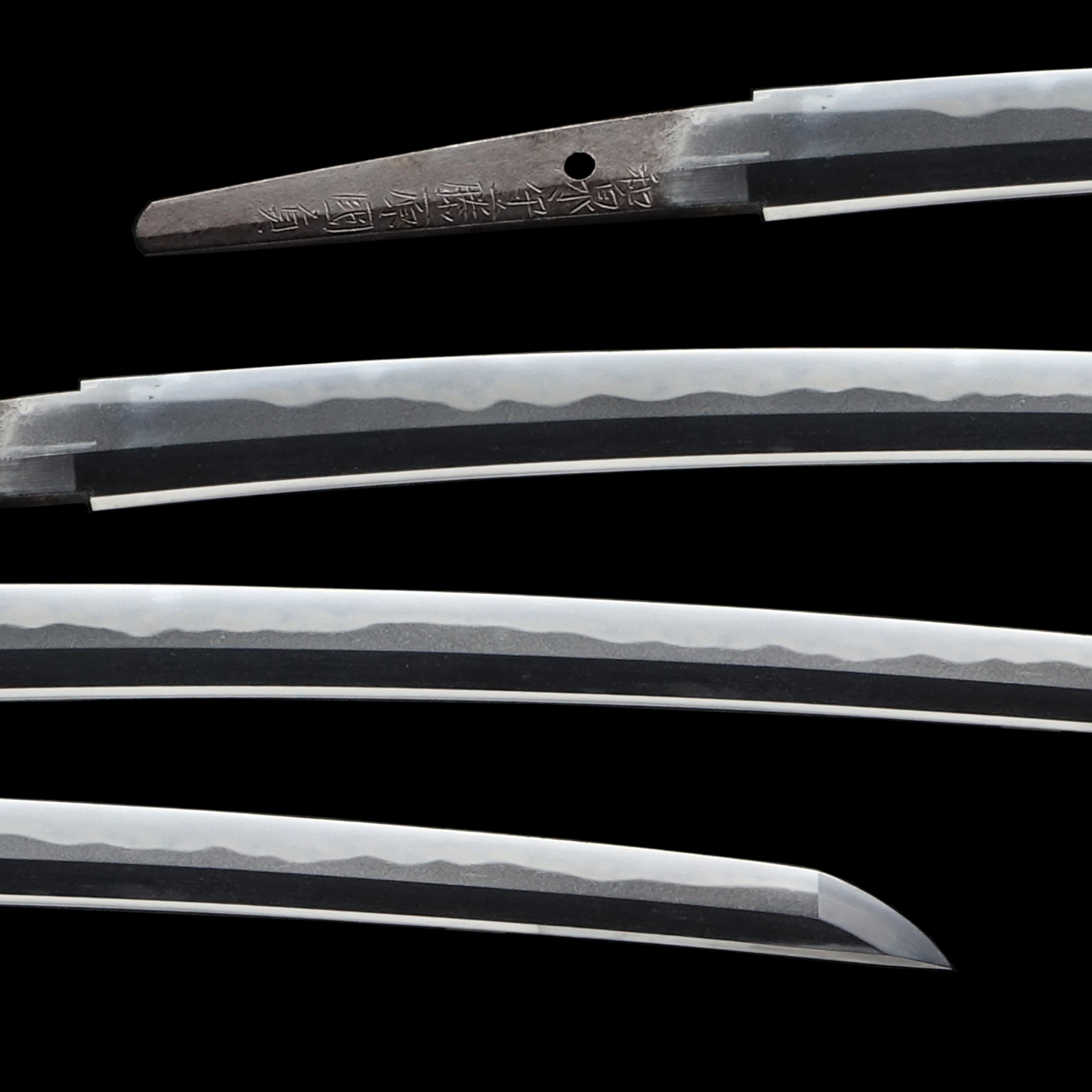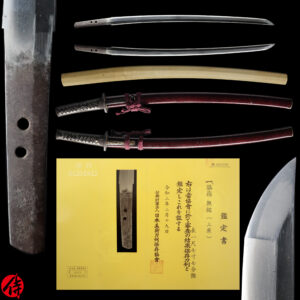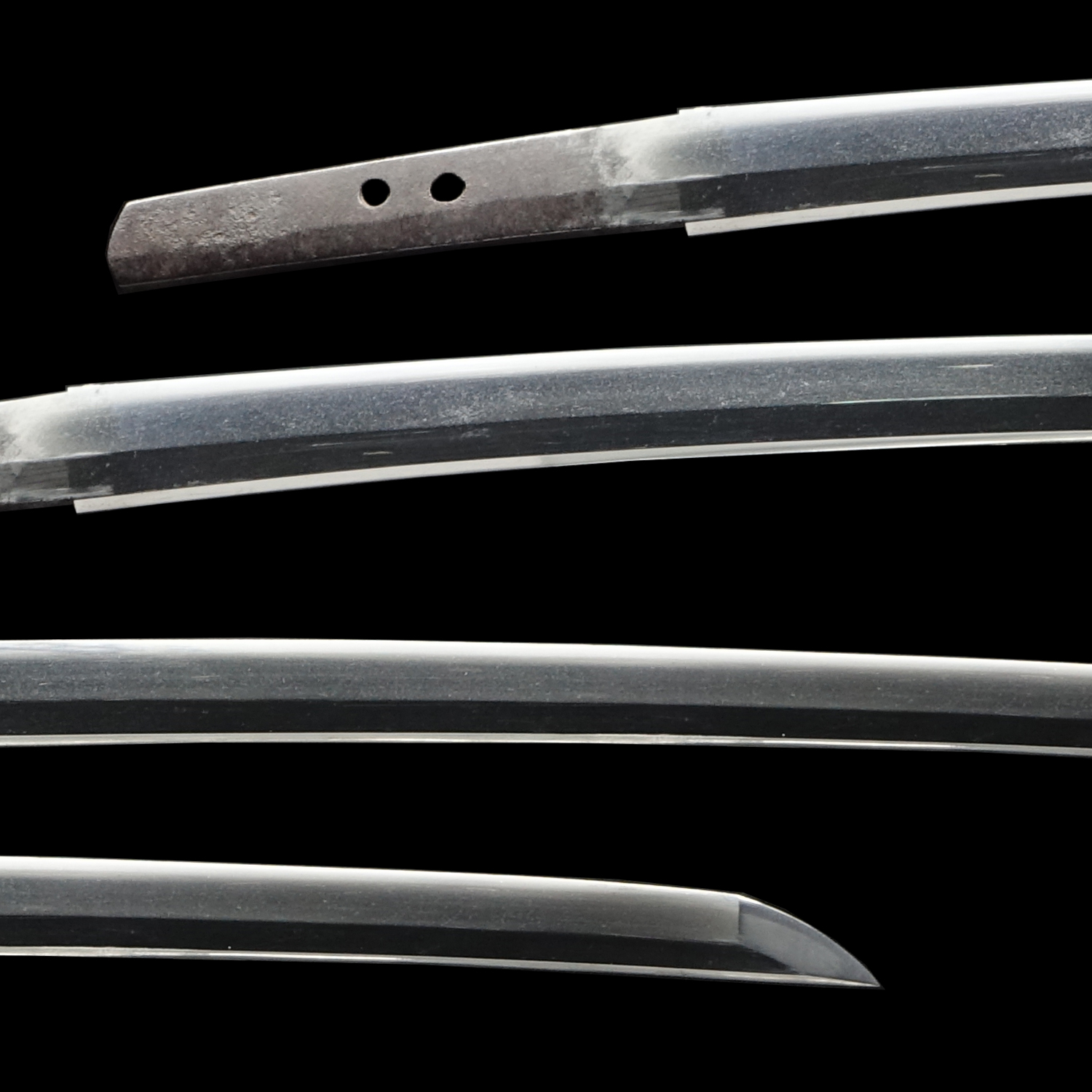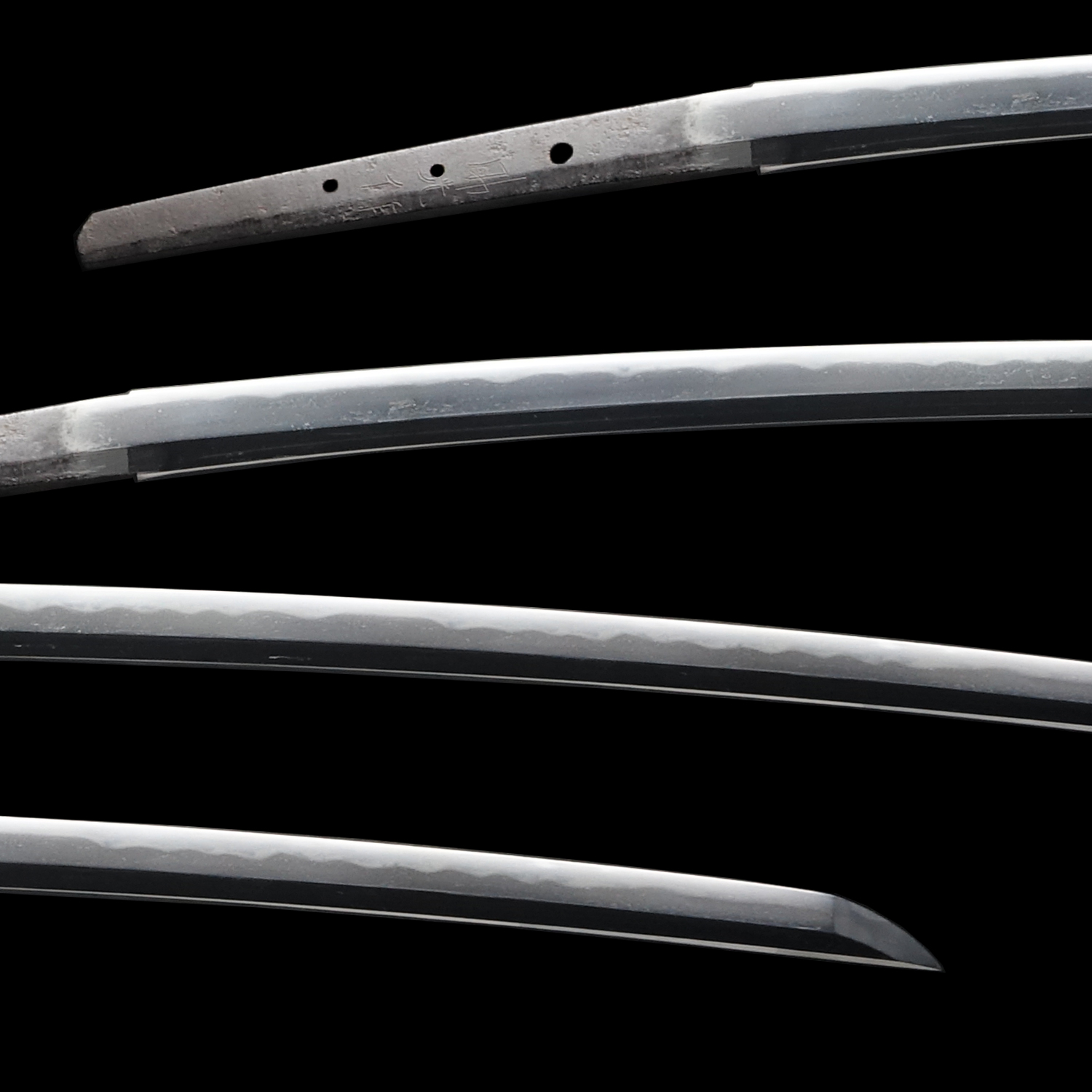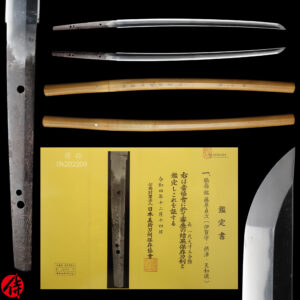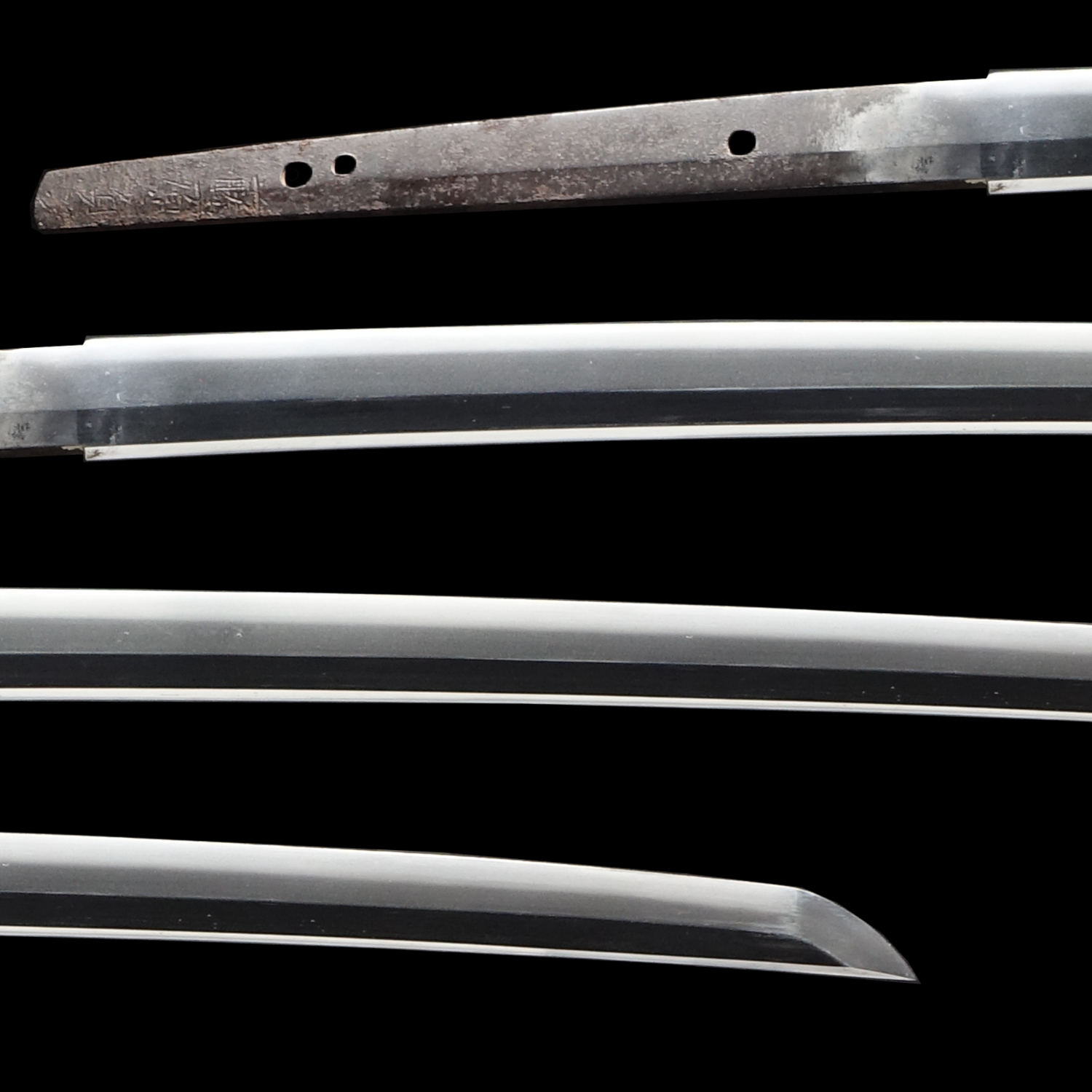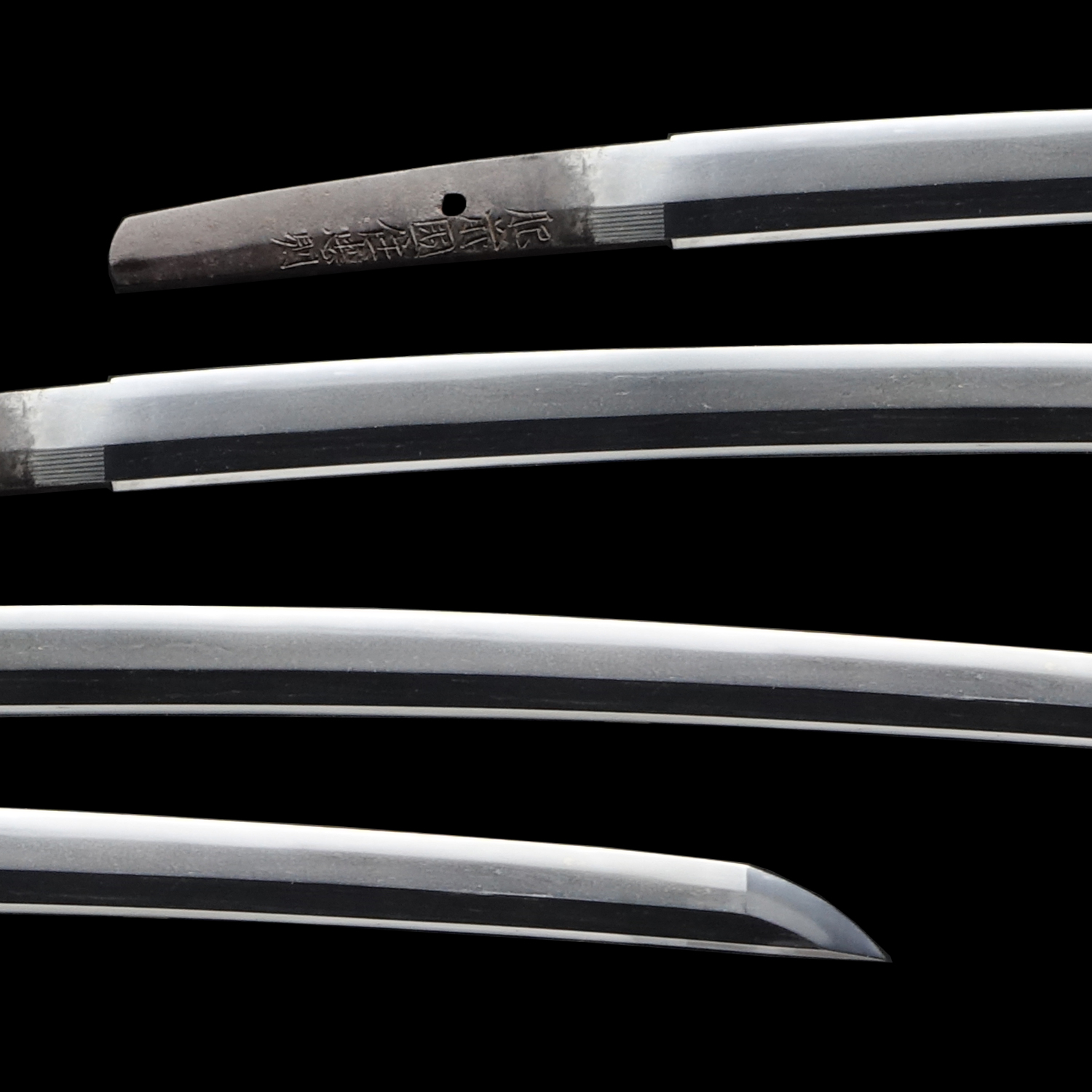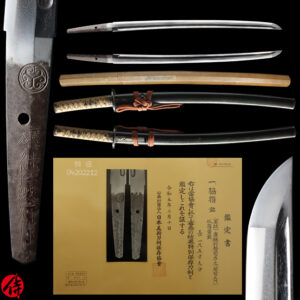【Episode 3】Budget for Buying the Japanese Sword
As you may know, there are a lot of Japanese swords for sale in online antique markets. They are swords from ancient times, KO-TO, and the ones from medieval times towards the Warring States period, refined Katanas from the Edo Period, and the ones made in modern times.
In this episode, we would like to help you understand the price of the Japanese sword by looking at the factors that make the swords more valuable.
INDEX
Chapter1:The Price Range
Chapter2: What factors determine the price of the Japanese Sword?
I: Age and Condition
II: Popularity
III: Sword Mountings
Ⅳ: The presence of certificates
———————————————
Chapter1:The Price Range
The price of a Japanese sword can range drastically depending on the condition, historical value and so on.
We have various antique Japanese swords for sale from 4.000 US dollars up to around 20,000 US dollars (Depending on USD-JPY exchange rate or selections we have ).
Honestly, it is not always easy to determine how much you should spend on an authentic Japanese sword. That depends on your budget and what you expect. If you would like to purchase one from the 80-100 pieces of our collection, 4.0 k$ – 40 k$ would be the average price range.
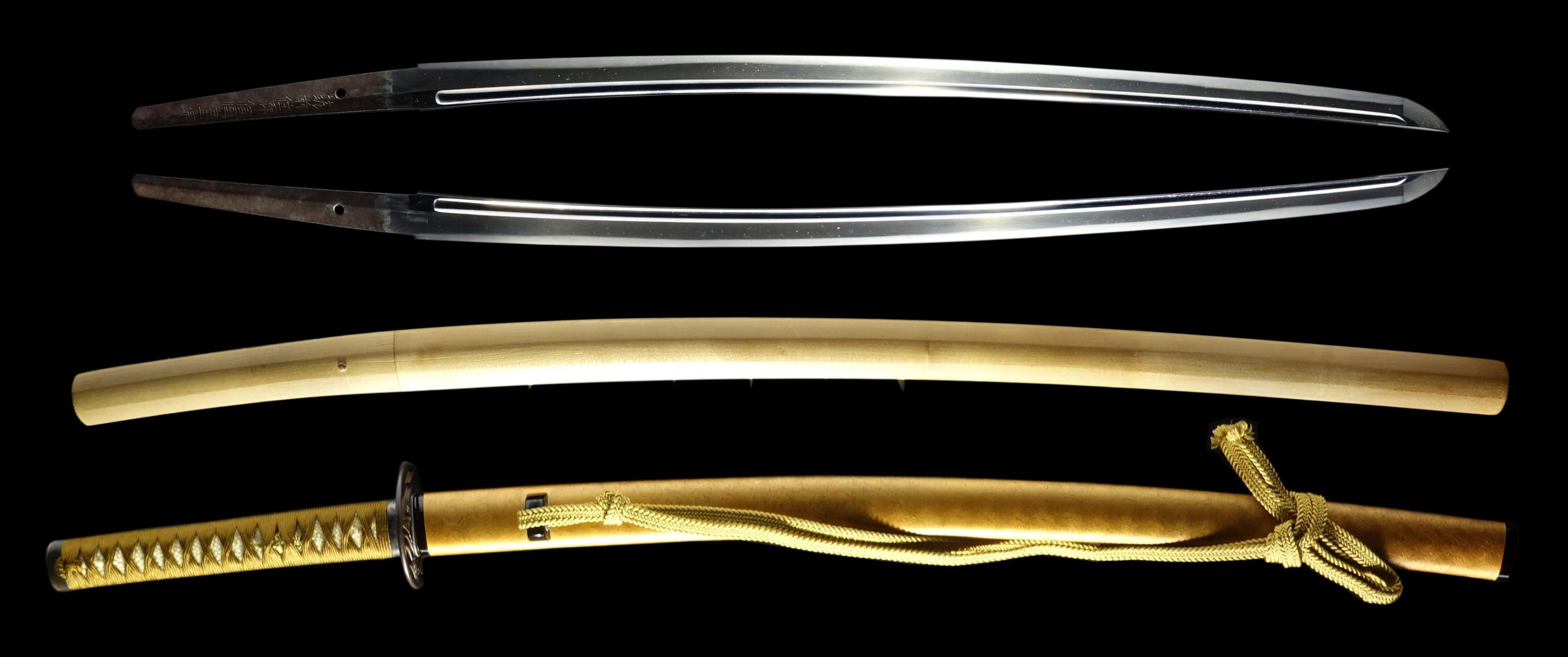
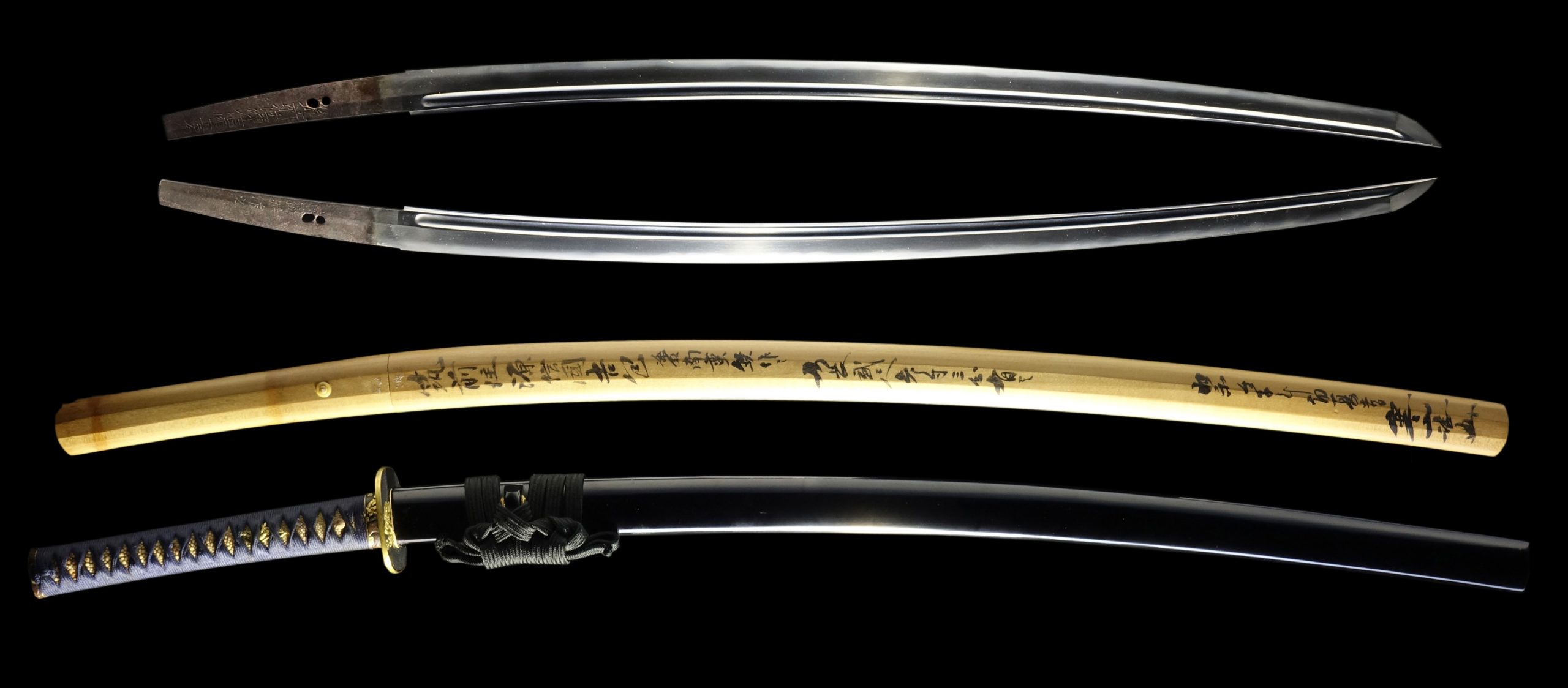
Chapter2: What factor determines the price of the Japanese Sword?
And of course, as you might have guessed, there are many ways to prove one to be a prestigious, authentic Katana. Here are some of the examples we could show you.
I: Age and Condition
As mentioned in the second episode of the series, there are swords from many different eras. Some of them are the swordsmiths’ earliest works, KO-TO, or some are the latest ones as in SHIN-SHIN-TO.
However, the first rule in this game that many beginners might misunderstand is that “Old Does Not Mean Expensive.” Oddly enough, there are new swords sold much more expensive than older ones.
A few blacksmiths in Japan are still forging traditional Japanese swords to this date, and those forged by the real TO-SHO (刀匠: Licensed Japanese blacksmith) typically cost around 10-20 k$ on average.
First and foremost, the main concept of the Japanese sword as antique is in the aesthetics, the beauty of the sword as a form of art. If the sword were not aesthetically in good condition, the price would go down as well. Chipped, slit, stained, broken blade or damaged mountings are strong negative points from the score. In most cases, those damages were difficult to fix. That is why some old swords with poor condition sell less expensive. You would rather have a refined 200-year-old piece than a stained, withered brown sword from 5 centuries ago.
II: Popularity
Historically, some Japanese swords have deeper historical backgrounds than the other ones.
As you could imagine, there would be a lot of famous individuals in Japanese blacksmith that have had spread their fame over the nation. Also, the swords forged by the schools of Katana such as GOKA-DEN (五家伝; The Five Sword Schools) are highly valued as antiques, some of which are selected as national treasures. We are also planning to write an article about those swordsmiths in the following episodes.
III: Sword Mountings
If an antique Japanese sword is for sale, you need to make sure which components of the swords they mean to sell. The blade typically comes with its Shirasaya (Wooden sheath) Koshirae (the decorative sword mountings such as the scabbard, the handle, the pommel).
You may also find Japanese swords that only have SHIRA-SAYA case. In that case, it is almost impossible to look for other sword mountings that would perfectly fit the blades unless you order the new ones to fit. Many Japanese sword collectors prefer to have their swords with Shirasaya, which was designed for keeping the blade in good condition. It is said that Samurais kept their swords in Shirasaya when they were at home. And when they went out to public places or battlefields, they changed their sword fittings from Shirasaya to Koshirae (martial-oriented, more decorative sword mountings).
Also, you often find a Shirasaya sword that sells for the same price as another sword with a set of Koshirae. That typically means that the blade’s quality of the one with Shirasaya is better than the one with Koshirae.
You might need to maintain your sword more frequently if your sword is stored in Koshirae. But other than that, you would have no problem as long as you take a good care of the sword. It is up to you whether if your sword has both Shirasaya and Koshirae or only one of those.
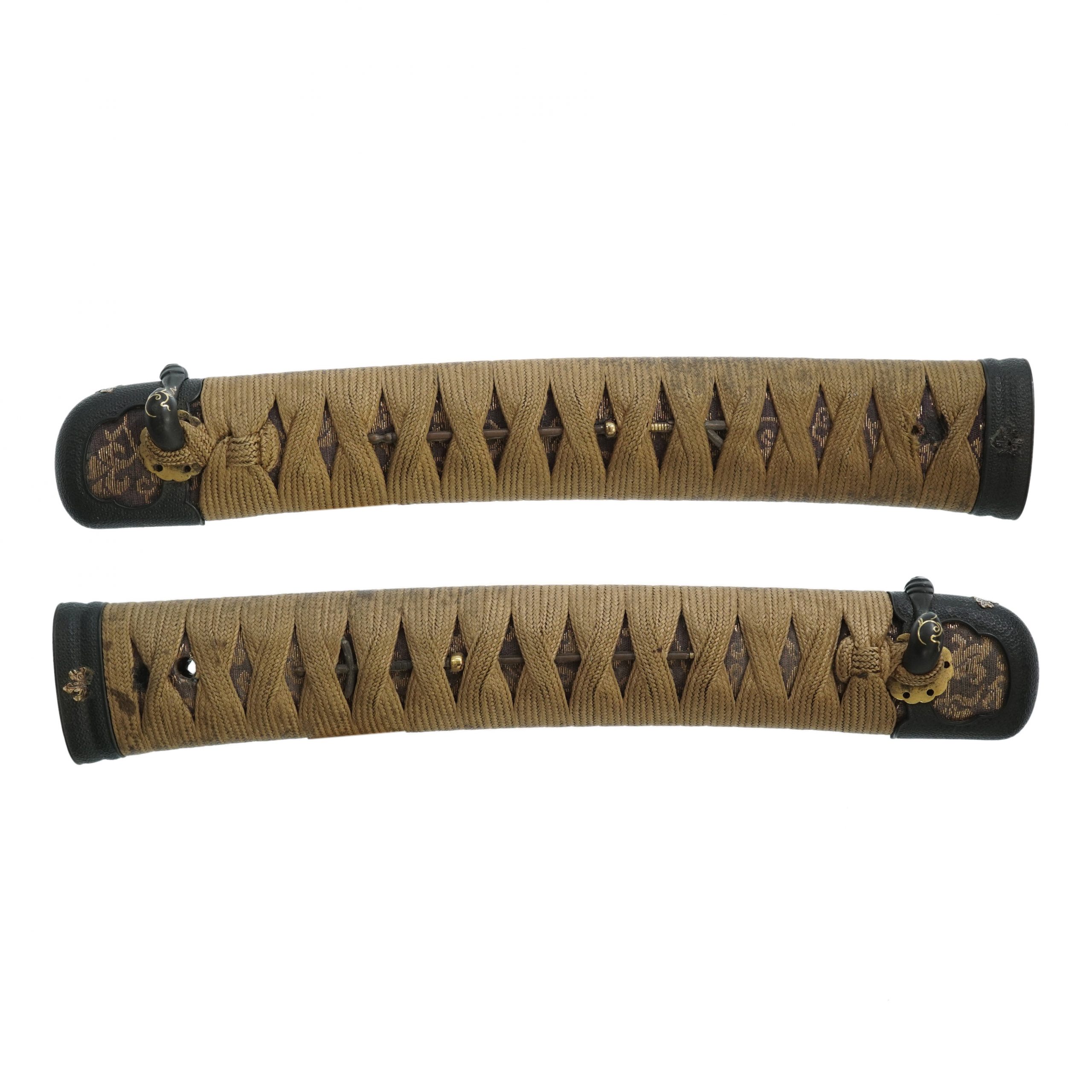
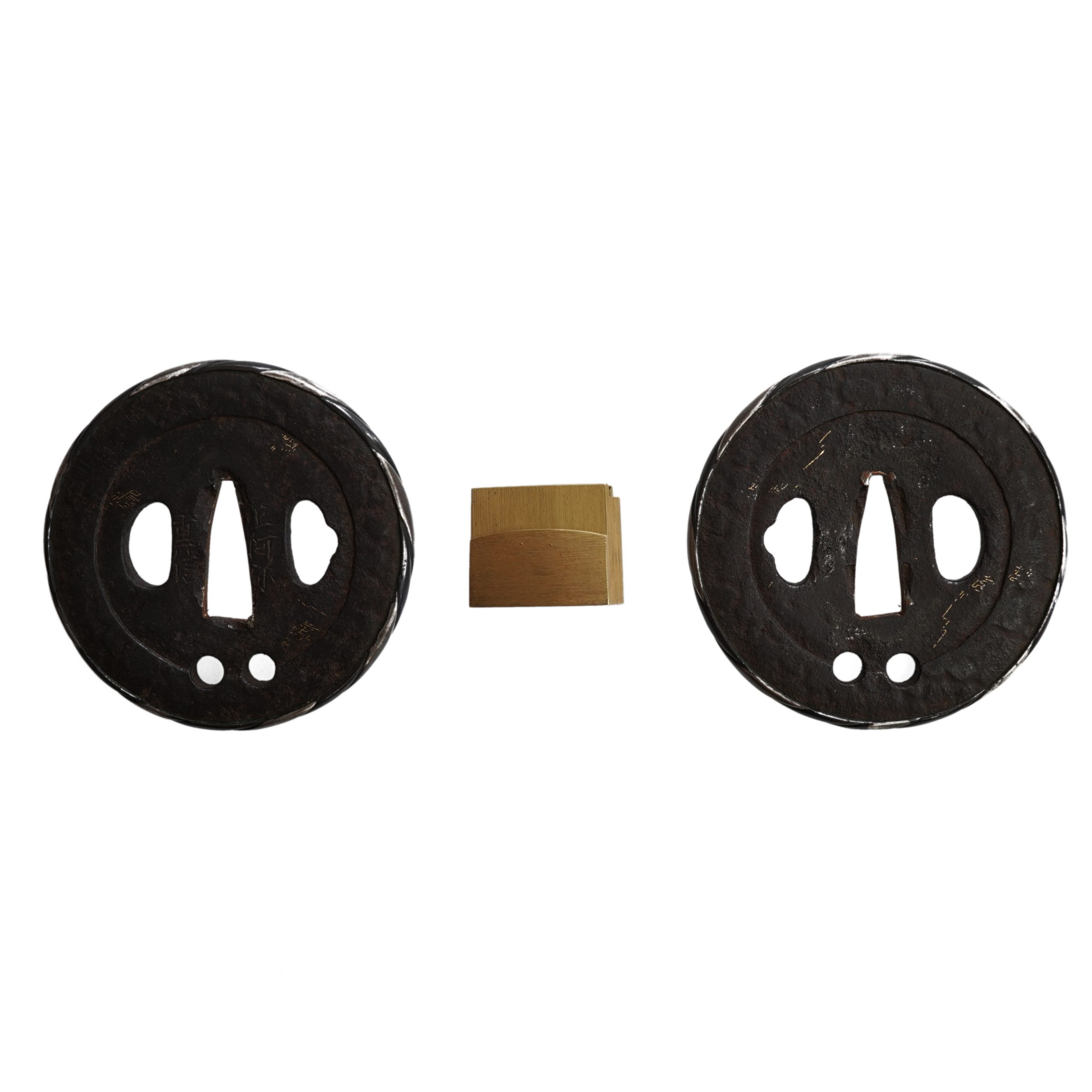
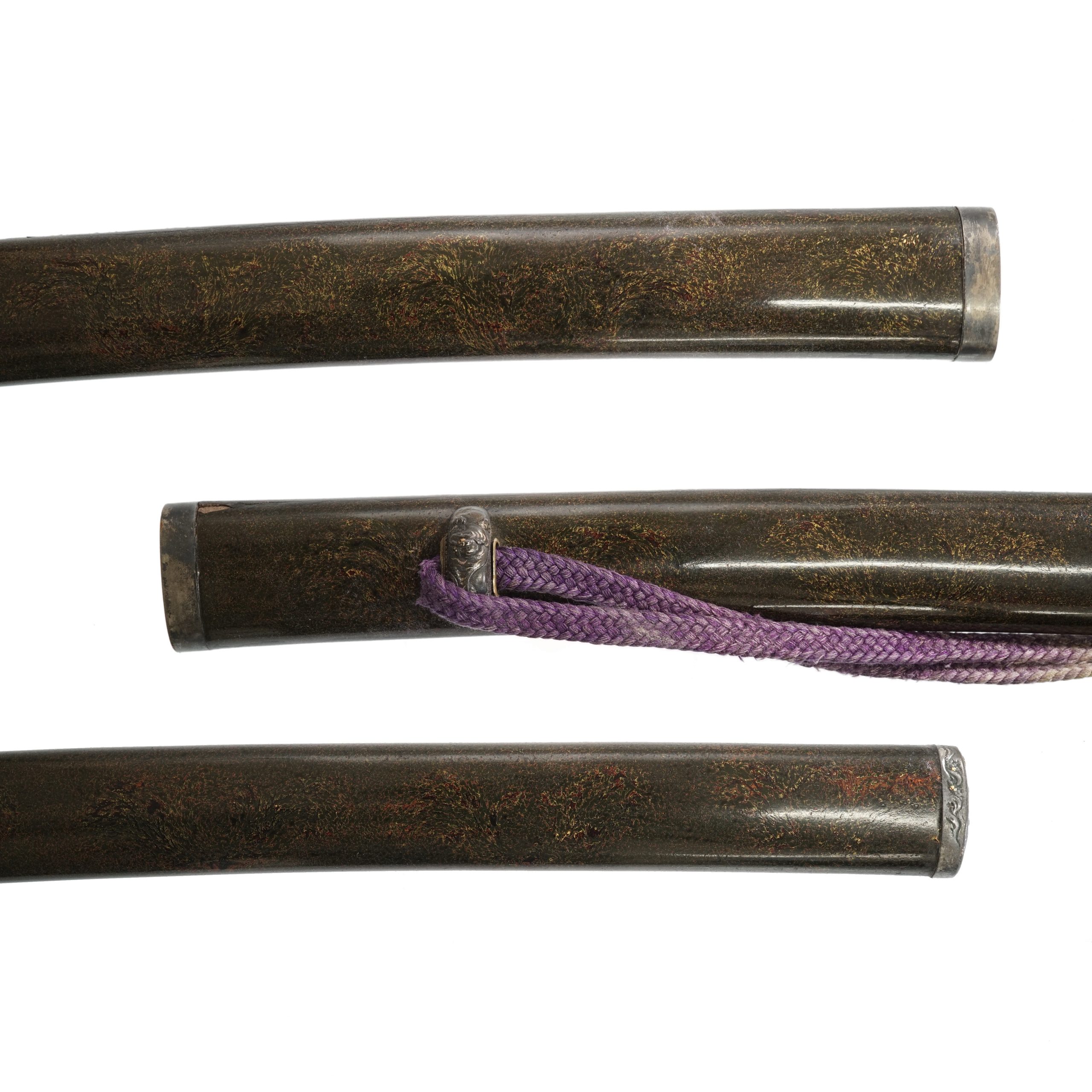
Ⅳ: The Presence of Certificates
Generally speaking, certified Japanese swords are more valuable. There are a couple of appraising committees where Japanese sword specialists discuss the swords’ authenticity. NBTHK (Nihon Bijyutsu Touken Hozon Kyokai) and NTHK (Nihon Touken Hozon Kai) are known as reliable organizations running for many years. In the future episodes, we will talk more about Japanese sword certification.
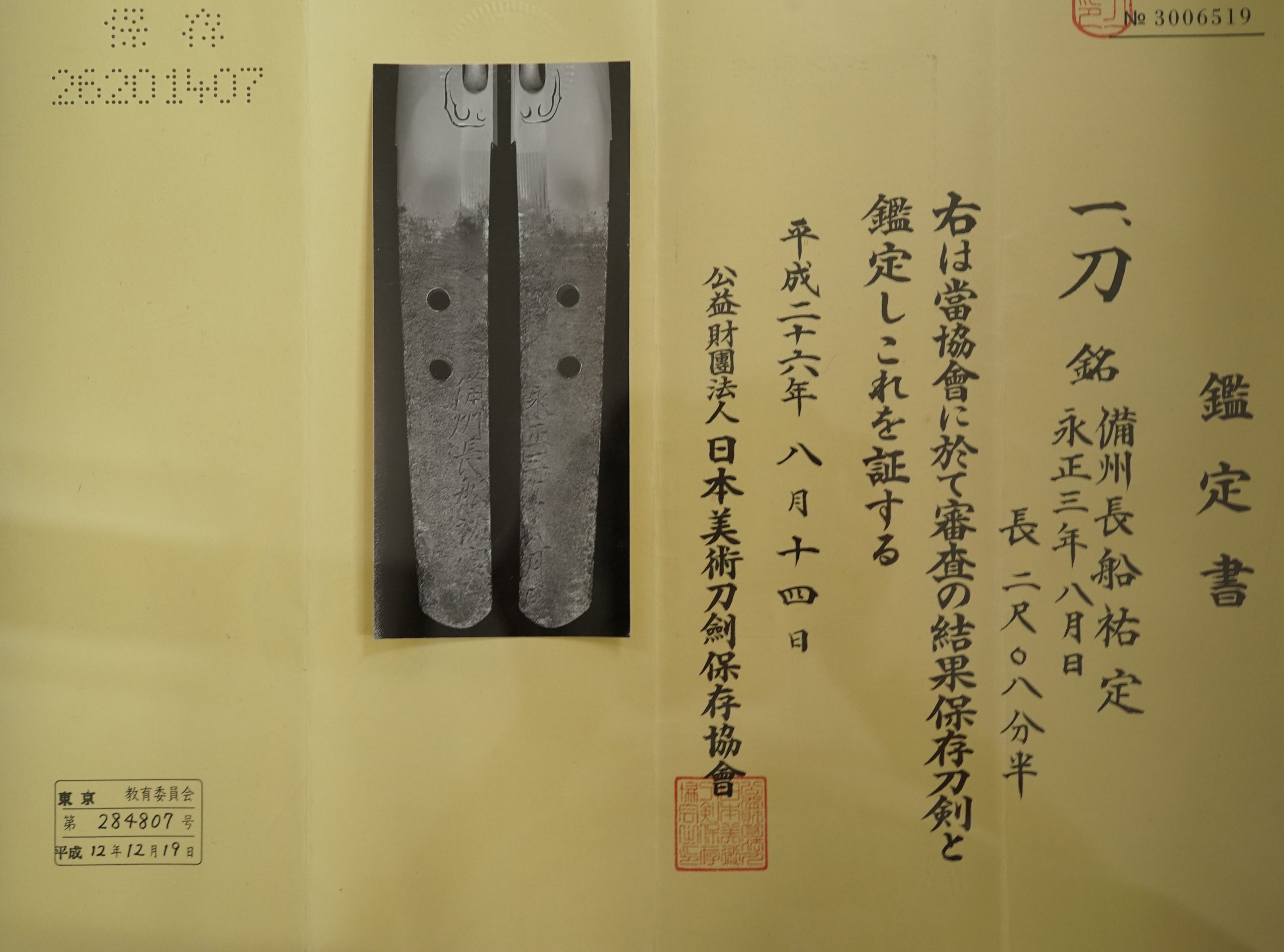

——————————————————————————————————-
That is about it for today’s article.
If you are planning to purchase a Japanese sword, The information above helps you decide how much you want to pay for a Japanese sword. We will see you in the next episode.
Samurai Museum
Address:2-25-6 Kabukicho Shinjuku-ku Tokyo Japan 160-0021
Email: order@samuraimuseum.jp
TEL:+81 3 6457 6411
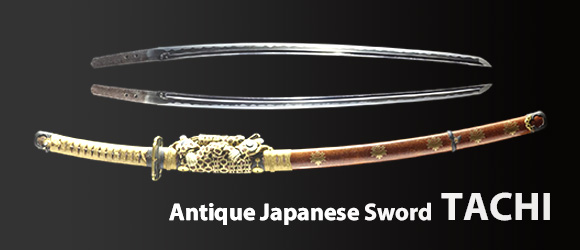
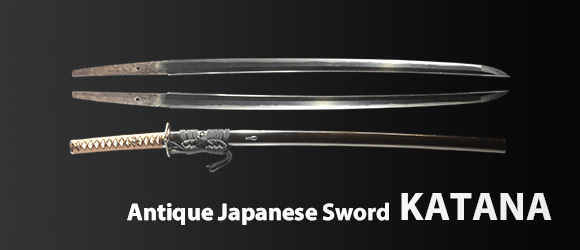
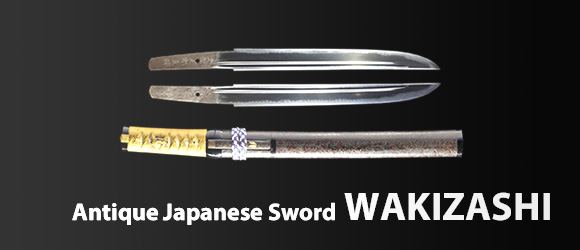
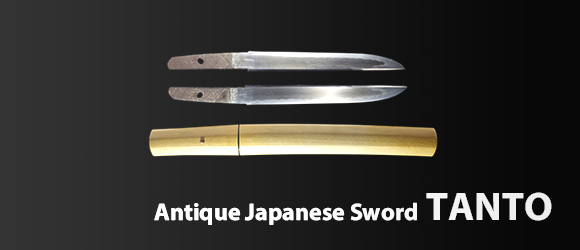
-
$14,142.91

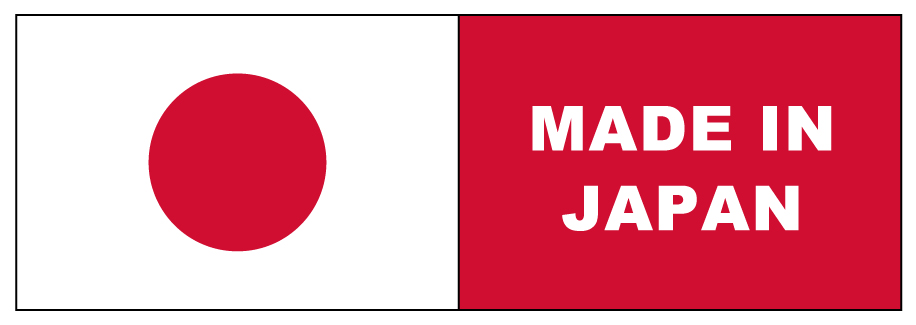
DELIVERY TIME : Approx. 1-1.5 months
*We ship from Tokyo, Japan. There might be delay in shipment depending on countries.
SHIPPING TO :
USA, UK, Canada, Mexico, Germany , Hong Kong, France, Australia
*Please contact us prior to purchase if your country isn’t listed.
INCLUDED : NBTHK Tokubetsu Hozon Certificate, Koshirae Mounting, Shirasaya Case, Traditional Sword Carrying Case, Sword Maintenance Kit, Full Exportation Support
| Category |
Katana ( SHINTO) |
| Age |
Early Edo Period (1641-1688) |
| Swordsmith |
Hizen Koku Jyu Omi no Daijyo Fujiwara Tadahiro
(肥前国住近江大掾藤原忠広) |
| Certificate |
NBTHK Tokubetsu Hozon Certificate |
| Location |
Hizen province (Today’s Saga prefecture) |
| Blade Size |
Cutting Edge Length: 72.4 cm (28.5 inches)
Curvature:1.66 cm (0.65 inches) |
More photos& videos available on request. Please feel free to contact us.
-
$27,642.96


DELIVERY TIME : Approx. 1-1.5 months
*There might be delay in shipment depending on countries
SHIPPING TO :
USA, UK, Canada, Mexico, Germany , Hong Kong, France, Australia
*Please contact us prior to purchase if your country isn’t listed.
INCLUDED : NBTHK Tokubetsu Hozon Certificate for Katana and Wakizashi , Shirasaya Case×2, Koshirae Mounting×2, Traditional Sword Carrying Case×2, Sword Maintenance Kit, Full Exportation Support
| Category |
Katana& Wakizashi ( SHINTO) |
| Age |
Early-Mid Edo period |
| Swordsmith |
The third-gen Yoshimichi (三代京丹波守吉道)
The fourth-gen Yoshimichi (四代京丹波守吉道) |
| Certificate |
NBTHK Tokubetsu Hozon Certificate for both blades |
| Location |
Yamashiro Province (Kyoto prefecture) |
| Blade Size |
Cutting Edge Length: 75.4 cm ( 29.7 inches)
Curvature: 1.30 cm ( 0.51 inches)
Cutting Edge Length: 50.0 cm ( 19.7 inches)
Curvature: 1.21 cm ( 0.47 inches) |
More photos& videos available on request. Please feel free to contact us.
-
$7,071.45


DELIVERY TIME : Approx. 1-1.5 months
*We ship from Tokyo, Japan. There might be delay in shipment depending on countries.
SHIPPING TO :
USA, UK, Canada, Mexico, Germany , Hong Kong, France, Finland, Australia
*Please contact us prior to purchase if your country isn’t listed.
INCLUDED : NBTHK Tokubetsu Hozon Certificate, Koshirae Mounting, Traditional Sword Carrying Case, Sword Maintenance Kit, Full Exportation Support
| Category |
Katana ( SHINTO) |
| Age |
Early Edo period (mid-late 17th century) |
| Swordsmith |
Sagami no Kami Fujiwara Kunitsuna (相模守藤原国綱) |
| Certificate |
NBTHK Tokubetsu Hozon Certificate |
| Location |
Echizen Province (Today’s Fukui prefecture) |
| Blade Size |
Cutting Edge Length: 71.5 cm (28.1 inches)
Curvature: 1.3 cm (0.51 inches) |
More photos& videos available on request. Please feel free to contact us.
-
$9,642.89


DELIVERY TIME : Approx. 1-1.5 months
*We ship from Tokyo, Japan. There might be delay in shipment depending on countries.
SHIPPING TO :
USA, UK, Canada, Mexico, Germany , Hong Kong, France, Finland, Australia
*Please contact us prior to purchase if your country isn’t listed.
INCLUDED : NBTHK Tokubetsu Hozon Certificate, NTHK Yushu Saku Certificate, Shirasaya Case (Plain Wooden Case), Traditional Sword Carrying Case, Sword Maintenance Kit, Full Exportation Support
| Category |
Wakizashi (SHINTO)
|
| Age |
Early Edo period (Early 17th century) |
| Swordsmith |
Izumi no Kami Fujiwara Kunisada (和泉守藤原国貞) |
| Certificate |
NBTHK Tokubetsu Hozon Certificate |
| Location |
Settsu province (Today’s Osaka prefecture) |
| Blade Size |
Cutting Edge Length: 54.8 cm (21.5 inches)
Curvature: 1.6 cm (0.63 inches)
|
More photos& videos available on request. Please feel free to contact us.
-
$3,857.16


DELIVERY TIME : Approx. 1-1.5 months
*We ship from Tokyo, Japan. There might be delay in shipment depending on countries.
SHIPPING TO :
USA, UK, Canada, Mexico, Germany , Hong Kong, France, Finland, Australia
*Please contact us prior to purchase if your country isn’t listed.
INCLUDED : NBTHK Hozon Certificate, Shirasaya Case, Koshirae Case, Traditional Sword Carrying Case, Sword Maintenance Kit, Full Exportation Support
| Category |
Wakizashi ( KOTO) |
| Age |
Early- Mid Muromachi period (Late 14th-Early 15th century) |
| Swordsmith |
attributed to Mihara (三原: Unsigned) |
| Certificate |
NBTHK Hozon Certificate |
| Location |
Bingo province(today’s Hiroshima prefecture) |
| Blade Size |
Cutting Edge Length : 53.8 cm ( 21.2 inches)
Curvature : 1.2 cm (0.47 inches)
|
More photos& videos available on request. Please feel free to contact us.
-
$6,428.59


DELIVERY TIME: Approx. 1-1.5 months
*We ship from Tokyo, Japan. There might be delay in shipment depending on countries.
SHIPPING TO:
USA, UK, Canada, Mexico, Germany, Hong Kong, France, Finland, Australia
*Please contact us prior to purchase if your country isn’t listed.
INCLUDED: NBTHK Hozon Certificate, Koshirae Case (Decorative Sword Mounting), Shirasaya Case, Traditional Sword Carrying Bag, Sword Maintenance Kit, Full Exportation Support
| Category |
Katana (KOTO :古刀)
|
| Age |
Late Muromachi Period |
| Swordsmith |
Sukemitsu (助光) |
| Certificate |
NBTHK Hozon Certificate |
| Location |
Unknown, possibly Suruga province (Today’s Shizuoka prefecture) |
| Blade Size |
Cutting Edge Length: 72.7 cm (28.6 inches)
Curvature: 2.1 cm (0.82 inches)
|
More photos& videos available on request. Please feel free to contact us.
-
$6,428.59


DELIVERY TIME : Approx. 1-1.5 months
*We ship from Tokyo, Japan. There might be delay in shipment depending on countries.
SHIPPING TO :
USA, UK, Canada, Mexico, Germany , Hong Kong, France, Finland, Australia
*Please contact us prior to purchase if your country isn’t listed.
INCLUDED : NBTHK Tokubetsu Hozon Certificate , Koshirae Case (Decorative Sword Mounting), Shirasaya Case, Traditional Sword Carrying Case, Sword Maintenance Kit, Full Exportation Support
| Category |
Wakizashi (SHIN SHIN TO)
|
| Age |
The third year of the Kyowa era (1803) |
| Swordsmith |
Tada Takakatsu (多田貴勝) |
| Certificate |
NBTHK Tokubetsu Hozon Certificate |
| Location |
Harima province (Today’s Hyogo prefecture) |
| Blade Size |
Cutting Edge Length: 40.2 cm (15.8 inches)
Curvature: 0.5 cm (0.19 inches)
|
Thank you for visiting our website. This sword was sold as each antique Japanese sword is one of a kind. However, we might be able to show you something similar because we have various types of swords available. Also, there are ones that aren’t listed on the website yet. Our customer service will help you find your ideal blade you will cherish for generations. Please feel free to contact us or check the list of swords. We will be more than happy to help you.
-
$2,892.87


DELIVERY TIME : Approx. 1-1.5 months
*We ship from Tokyo, Japan. There might be delay in shipment depending on countries.
SHIPPING TO :
USA, UK, Canada, Mexico, Germany , Hong Kong, France, Australia
*Please contact us prior to purchase if your country isn’t listed.
INCLUDED : NBTHK Hozon Certificate, Shirasaya Case (Plain Wooden Case), Traditional Sword Carrying Case, Sword Maintenance Kit, Full Exportation Support
| Category |
Wakizashi (SHINTO)
|
| Age |
Tenwa era (1681-1684) |
| Swordsmith |
Fujiwara Sadatsugu (藤原貞次) |
| Certificate |
NBTHK Hozon Certificate |
| Location |
Settsu province (Today’s Osaka prefecture) |
| Blade Size |
Cutting Edge Length: 59.2 cm (23.3 inches)
Curvature: 1.0 cm (0.39 inches)
|
More photos& videos available on request. Please feel free to contact us.
-
$2,571.44


DELIVERY TIME : Approx. 1-1.5 months
*We ship from Tokyo, Japan. There might be delay in shipment depending on countries.
SHIPPING TO :
USA, UK, Canada, Mexico, Germany , Hong Kong, France, Australia
*Please contact us prior to purchase if your country isn’t listed.
INCLUDED : NBTHK Hozon Certificate, Shirasaya Case (Plain Wooden Case), Traditional Sword Carrying Case, Sword Maintenance Kit, Full Exportation Support
| Category |
Wakizashi (SHINTO)
|
| Age |
Early Edo Period (1661-1673) |
| Swordsmith |
Hizen Koku Jyu Tadanori (肥前国住忠則) |
| Certificate |
NBTHK Hozon Certificate |
| Location |
Hizen province (Today’s Saga prefecture) |
| Blade Size |
Cutting Edge Length: 51.4 cm (20.2 inches)
Curvature: 1.2 cm (0.47 inches)
|
Thank you for visiting our website. This sword was sold as each antique Japanese sword is one of a kind. However, we might be able to show you something similar because we have various types of swords available. Also, there are ones that aren’t listed on the website yet. Our customer service will help you find your ideal blade you will cherish for generations. Please feel free to contact us or check the list of swords. We will be more than happy to help you.
-
$9,000.03


DELIVERY TIME : Approx. 1-1.5 months
*We ship from Tokyo, Japan. There might be delay in shipment depending on countries.
SHIPPING TO :
USA, UK, Canada, Mexico, Germany , Hong Kong, France, Finland, Australia
*Please contact us prior to purchase if your country isn’t listed.
INCLUDED : NBTHK Tokubetsu Hozon Certificate , Koshirae Case (Decorative Sword Mounting), Shirasaya Case, Traditional Sword Carrying Case, Sword Maintenance Kit, Full Exportation Support
| Category |
Wakizashi (SHINTO)
|
| Age |
Early Edo Period |
| Swordsmith |
The third-gen Echizen Yasutsugu (三代越前康継) |
| Certificate |
NBTHK Tokubetsu Hozon Certificate |
| Location |
Echizen province (Today’s Fukui prefecture) |
| Blade Size |
Cutting Edge Length: 48.2 cm (18.9 inches)
Curvature: 0.8 cm (0.31 inches)
|
More photos& videos available on request. Please feel free to contact us.





